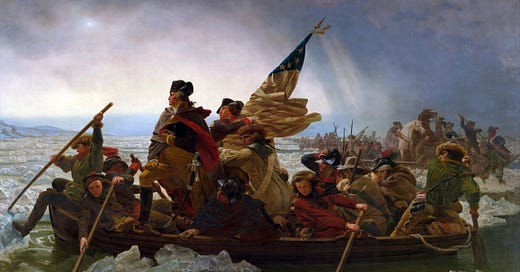Washington Crossing the Delaware: A Beacon of the American Spirit
By Joseph Kellard
Unveiled in America at the Stuyvesant Institute in Manhattan in 1851, Emanuel Leutze’s Washington Crossing the Delaware attracted a level of interest and praise as noteworthy as the painting’s twelve foot by twenty-four foot dimensions.
Within four months of the exhibit’s opening, more than fifty thousand people viewed the panoramic painting of General G…
Keep reading with a 7-day free trial
Subscribe to The Objective Standard to keep reading this post and get 7 days of free access to the full post archives.




